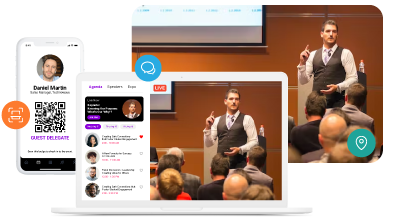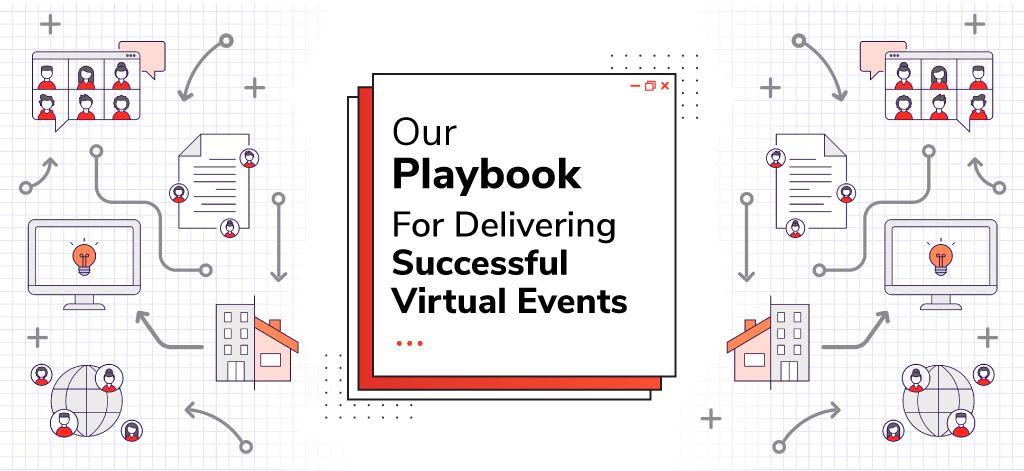Virtual events such as virtual conferences, summits, expos, trade shows etc have replaced most physical events this year and you’re probably wondering how to host and deliver a successful virtual event for your brand.
In this blog, we’re going to guide you through some important pointers for ensuring successful deliveries for virtual events.
Think beyond just the virtual event
Don’t let your virtual conferences, summits, expos, trade shows etc just be a virtual event. Instead, think beyond the virtual event. There are a number of ways you can reuse the content created for your virtual event.
For example, the videos created for your virtual conferencing purposes can also be used in marketing future events. You can also create additional content such as articles with main talking points of the event, recap session blogs, etc.
Essentially, in order to ensure the successful delivery of a virtual event, you should be willing to think beyond just the short-term event and work towards the longer-goal of leveraging all aspects of the virtual lobby experience to its fullest extension.
Use the right virtual events platform
Using the right virtual event platform is the key factor when it comes to delivering successful events. Given the current demand, there are various options available and it is hard to find the best platform your requirements.
It is a good idea to take a virtual event walkthrough using the tool to get a hands-on experience of what your attendees can expect.
Remote meeting technology has been around for a long while but a virtual event is a pretty new development. This means there are a number of tools that are not tested properly and glitches can be common. Therefore, it is important to use a platform that is secure, innovative, and affordable.
It might be tempting to use the most expensive virtual platform but that is a common trap to fall into. There are a lot of decently priced platforms that can provide all the features you would need. Instead of blowing all your budget on just the platform itself, it is important to dedicate a decent chunk to content and management too in order to provide the best virtual event experience for your attendees.
Explore the power of social media for virtual and hybrid events
We’ve already seen the power of social media when it comes to live events and hybrid events. It can be instrumental when it comes to marketing the event and getting the word out.
Similarly, when it comes to virtual conferences, summit, expos, trade shows etc, using social media is vital. Platforms like Facebook, Instagram, LinkedIn, and Twitter should all be used in the marketing process.
Social media can not only be leveraged to getting more people to attend the event but also to increase the brand value and public reception of the virtual event. Also checkout these amazing tips to engage attendees at virtual events.
Make virtual events fun for your sponsors and exhibitors too
While your focus should be on providing the best virtual lobby experience for the attendees, you should not forget about the sponsors or exhibitors too.
Using the right virtual event platform can also play a large role here. You ideally want to make things as simple as possible for your sponsors and exhibitors. Most platforms provide a list of features such as custom booths and dedicated sponsor pages just to make things easier for you.
At the end of the day, no event is possible without sponsors and exhibitors. In order to deliver a successful event, you’ll have to keep them in mind too.
Follow a story-telling approach to marketing your virtual event
Statistically speaking, following a story-telling approach is ideal when it comes to event management. You should focus on telling compelling and interesting stories about the event on all your marketing channels.
Some stories for virtual conferencing events including things like sponsor testimonials, highlight articles, attendee feedback, case studies, and more.
It is a good idea to mix up the format too when it comes to creating marketing content for your virtual event. This gives you the freedom to tell stories in different ways. For example, you should create an article that covers the core topic of the event and a small video that explains the core topic too but in a visual format.
Don’t be afraid to get creative
Lastly, virtual events are still a relatively new thing when you consider the amount of traffic they are getting in 2020. This means the standards are yet to be defined and there’s plenty of opportunities to be creative.
Don’t be afraid to pitch creative ideas for the event. You can use a new content strategy, make use of the latest virtual event engagement features, or follow a radically innovative marketing plan.
Testing and dry runs should be a key part of the virtual events setup process
The last thing you would want is your virtual event to start glitching right in the middle of the event. This is why it is absolutely important to ensure that testing and dry-runs are essential in virtual events setup process.
It is important to check for all possible types of problems that can arise and have a ready-to-go solution for them that can be implemented on the fly.
Even though it can seem a bit tedious, religious testing and dry-runs ensure your event will be successful. Also, check this guide to virtual events and conferences.
Final Thoughts
If you’re planning to host a virtual event in 2020, you will have tons of competition but you can definitely deliver a successful virtual event if you follow the right principles. We hope this blog was helpful in providing you an insight into the world of virtual events.
Create an Extraordinary Event Experience
Across All Event Formats







